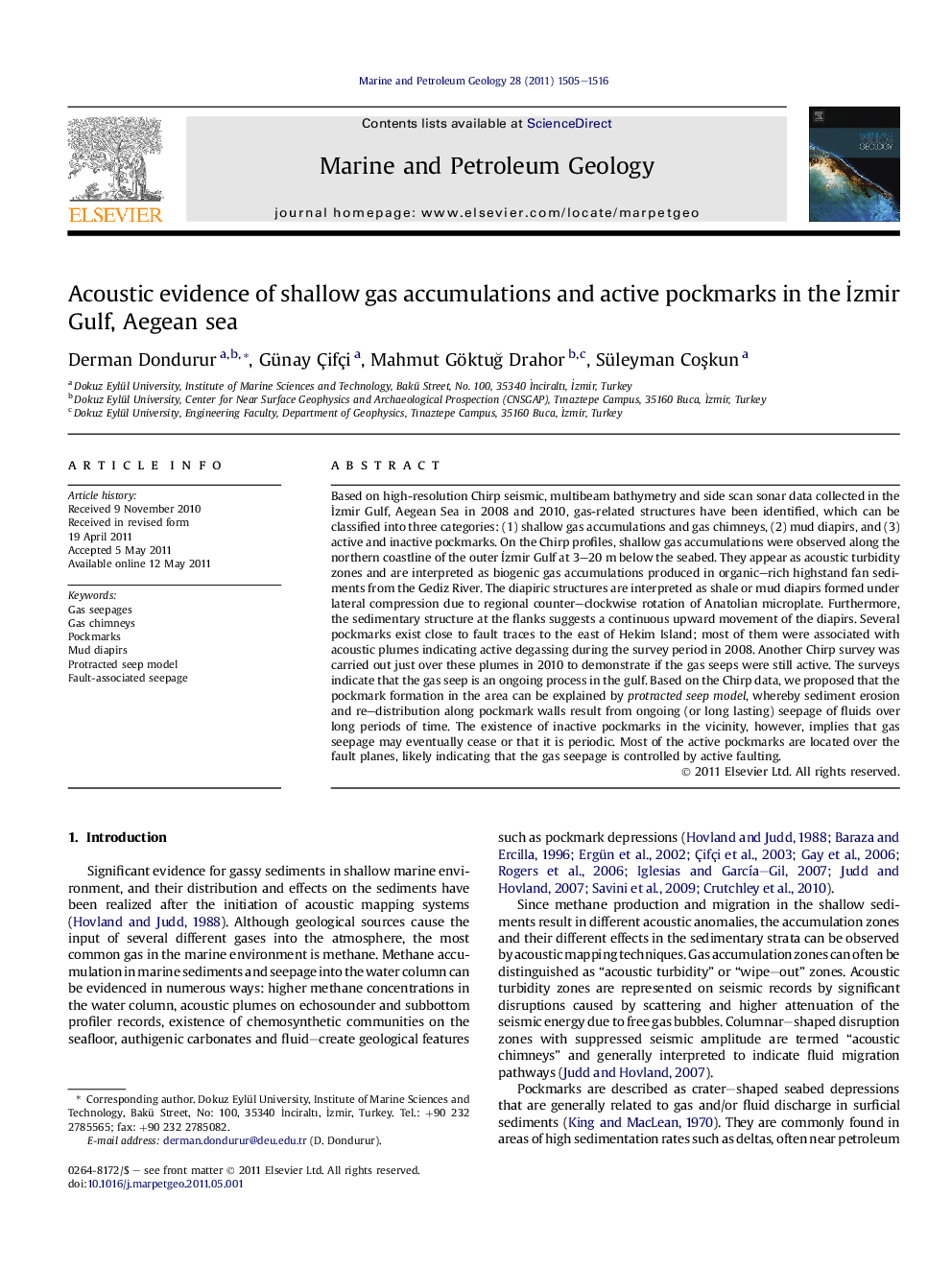| کد مقاله | کد نشریه | سال انتشار | مقاله انگلیسی | نسخه تمام متن |
|---|---|---|---|---|
| 4695997 | 1351649 | 2011 | 12 صفحه PDF | دانلود رایگان |

Based on high-resolution Chirp seismic, multibeam bathymetry and side scan sonar data collected in the İzmir Gulf, Aegean Sea in 2008 and 2010, gas-related structures have been identified, which can be classified into three categories: (1) shallow gas accumulations and gas chimneys, (2) mud diapirs, and (3) active and inactive pockmarks. On the Chirp profiles, shallow gas accumulations were observed along the northern coastline of the outer İzmir Gulf at 3–20 m below the seabed. They appear as acoustic turbidity zones and are interpreted as biogenic gas accumulations produced in organic–rich highstand fan sediments from the Gediz River. The diapiric structures are interpreted as shale or mud diapirs formed under lateral compression due to regional counter–clockwise rotation of Anatolian microplate. Furthermore, the sedimentary structure at the flanks suggests a continuous upward movement of the diapirs. Several pockmarks exist close to fault traces to the east of Hekim Island; most of them were associated with acoustic plumes indicating active degassing during the survey period in 2008. Another Chirp survey was carried out just over these plumes in 2010 to demonstrate if the gas seeps were still active. The surveys indicate that the gas seep is an ongoing process in the gulf. Based on the Chirp data, we proposed that the pockmark formation in the area can be explained by protracted seep model, whereby sediment erosion and re–distribution along pockmark walls result from ongoing (or long lasting) seepage of fluids over long periods of time. The existence of inactive pockmarks in the vicinity, however, implies that gas seepage may eventually cease or that it is periodic. Most of the active pockmarks are located over the fault planes, likely indicating that the gas seepage is controlled by active faulting.
► Gas-related structures are classified as gas chimneys, mud diapirs, and pockmarks.
► The gas seep is an ongoing process in the gulf.
► Pockmarks are formed by ongoing seepage of fluids over long periods of time.
► Distribution of active pockmarks indicates that active faulting controls the gas seepage.
Journal: Marine and Petroleum Geology - Volume 28, Issue 8, August 2011, Pages 1505–1516